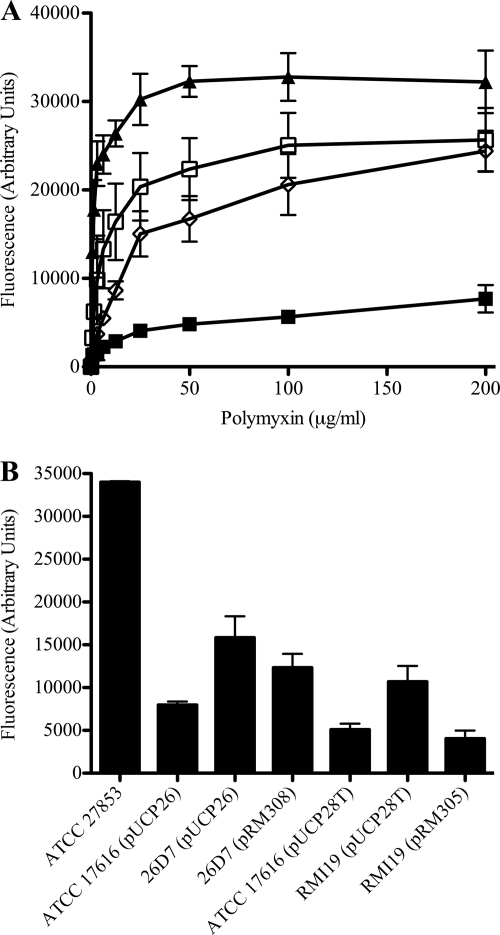Fig 2.
Effect of increasing concentrations of polymyxin B on the outer membrane permeability of B. multivorans ATCC 17616 compared to mutants 26D7 and RMI19. Polymyxin B was titrated into suspensions of whole bacteria at an OD600 of 0.5 and 10 μM NPN. An increase in fluorescence corresponded to an increase in membrane permeability and uptake of NPN into the hydrophobic periplasm. Data were calculated as the fluorescence with polymyxin B minus the fluorescence without it and represent means for three biological replicates ± standard errors of the means. (A) Mutants 26D7 and RMΙ19 were each significantly more permeable to NPN than the parent strain in 0.78 to 200 μg/ml of polymyxin B (P < 0.02; t test). ■, B. multivorans ATCC 17616; □, B. multivorans 26D7; ◊;, B. multivorans RMI19; ▴, P. aeruginosa ATCC 27853. (B) Outer membrane permeability of mutant strains in the presence of 100 mg/ml polymyxin B is restored when the mutations are complemented in trans. P. aeruginosa ATCC 27853 was used as a positive control. B. multivorans 26D7(pUCP26) and B. multivorans RMI19(pUCP28T) were significantly more permeable to NPN at 100 mg/ml polymyxin B than the B. multivorans ATCC 17616 parent strain with the respective empty vector (P < 0.05; ANOVA). B. multivorans 26D7(pRM308) was not significantly different from the parent or mutant strain with pUCP26. The permeability of B. multivorans RMI19(pRM305) to NPN was significantly less than that of RMI19(pUCP28T) at 100 mg/ml of polymyxin B (P < 0.05; ANOVA).

